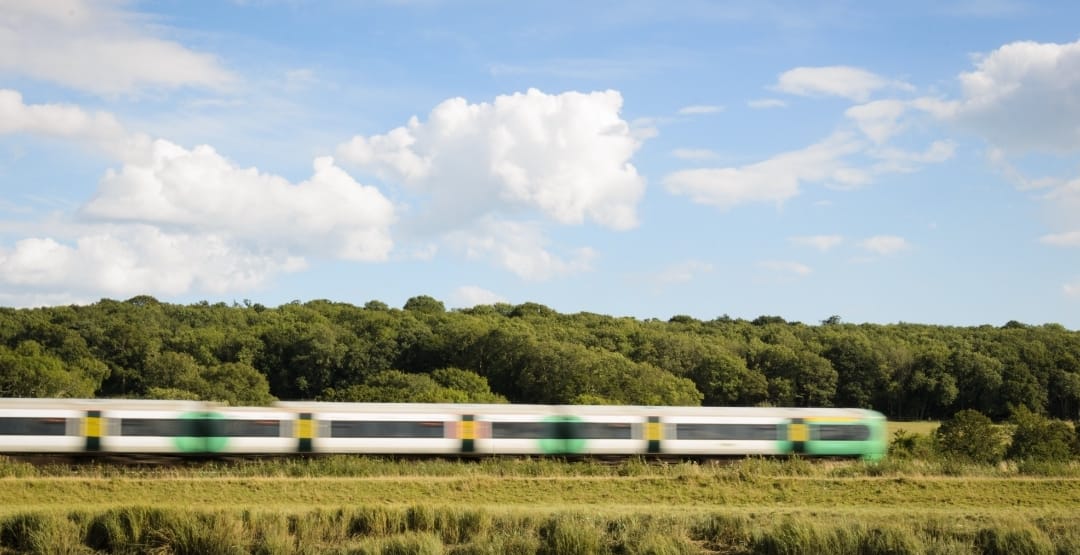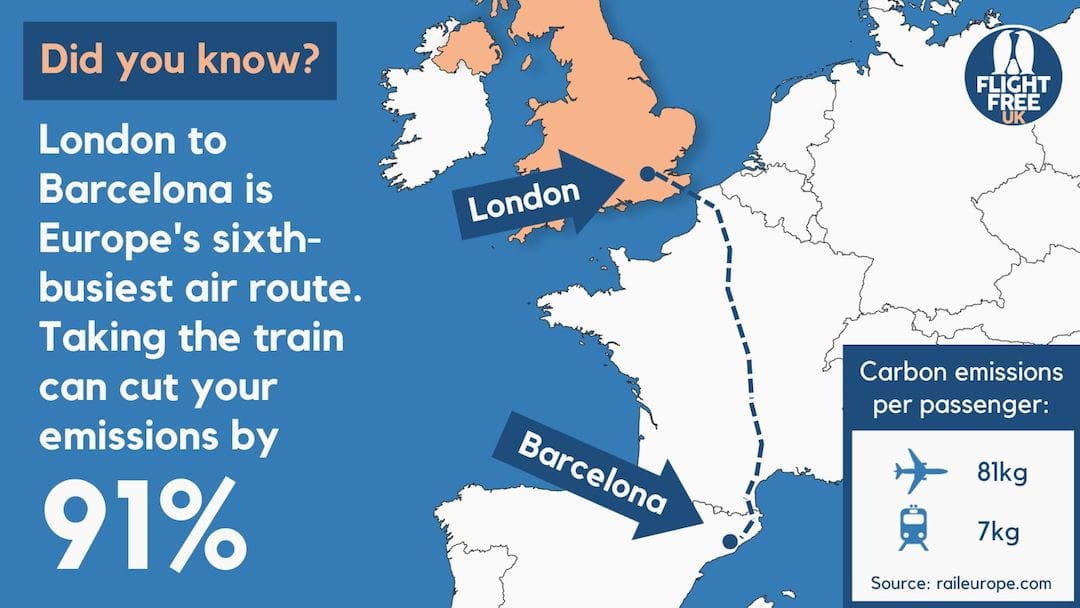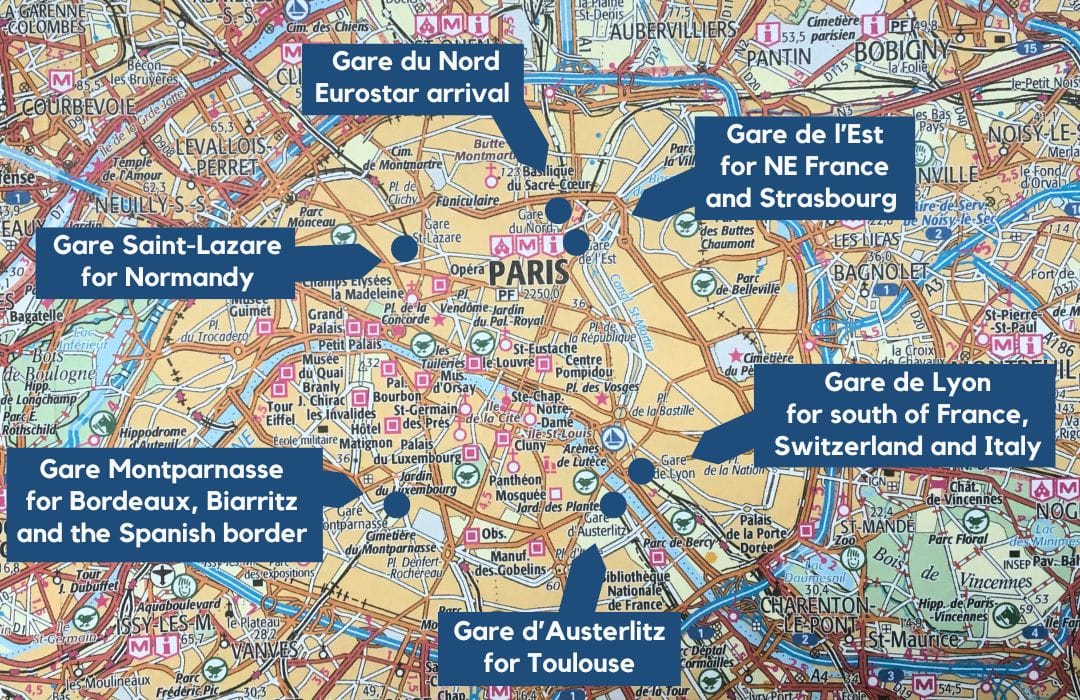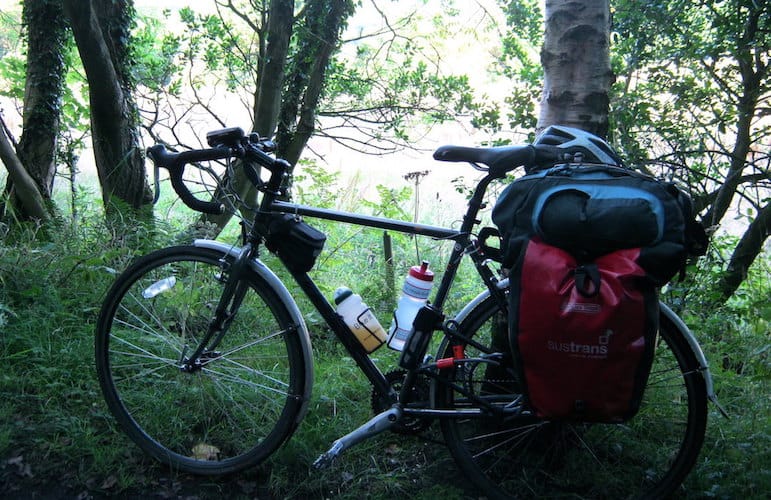
Why travel by train?
Trains are the ultimate in no-fly travel: fast and efficient, they can transport you quickly from one country to the next with none of the space restriction or discomfort of a flight.
Typically bringing you direct to the city centre, you can disembark and jump straight into your holiday without worrying about lengthy and expensive transfers.
Plug sockets, wifi and tables mean you can spend your time working, reading, sleeping or anything you choose. You can get up and go to the cafe bar or toilet at any time, or you can bring your own picnic and start your holiday in style. A train journey is something to be enjoyed, rather than endured.
A train journey is something to be enjoyed, rather than endured
And that’s before we get to the views! Seeing the landscape steadily change out of the window enriches the journey and enhances your understanding and anticipation of the place you are travelling towards in a way that doesn’t happen with other forms of travel. It is nostalgic, but at the same time, completely modern.
To top it off, the emissions savings are huge. On average, trains in the UK emit 6 times less CO2 than the equivalent flight, and on the continent, where most trains are electrified, the emissions are 10 times less.
For short-haul flights, the time taken travelling is about the same as the train equivalent by the time you have factored in check-in and transfers. We are firmly of the opinion there are no disadvantages to travelling by train – only advantages!

Cost
Trains do often cost more than planes, especially when considering all the dirt-cheap flights out there. However, it’s not always cheaper to fly, and there are some important things to remember about train travel and cost:
- air travel is exempt from tax, making it artificially cheap
- when you factor in transfers, luggage costs etc, the price of the flight gets much closer to the cost of the train
- bear in mind that when you fly, you’re paying for a small seat and a cattle-herd experience (according to some travellers!), but with a train your money gets you leg room, the ability to get up and move around whenever you like, and great views
- you might be paying for more than one transport provider e.g. if you have to change trains, whereas the flight will just be one airline, so naturally the cost will be higher
Having said all that, it is very possible to get cheap fares!
- Book in advance
- Try Interrail (see below)
- Split your ticket
- Use slower, local trains
Eurostar
If you’re travelling by train to the continent, chances are your journey will begin with the Eurostar (unless you cross to continental Europe on the ferry, then continue by train – see ‘how to travel by ferry’ for help with that).
The Eurostar is fantastic – easy check-in, comfortable seating, and fast, efficient and reliable travel to Paris, Lille, Brussels or Amsterdam, with routes due to expand into Switzerland and Germany from 2030.
The Eurostar website recommends you arrive 75 minutes ahead of your train departure time. We would suggest this is too early; there is limited space in the departure lounge, and if you arrive early you will be waiting around for a long time without a seat! We recommend arriving 45 minutes before departure, giving you plenty of time to reach the gates before they close (30 minutes before departure). Check-in usually takes less than 10 minutes.
There are coffee shops and food outlets inside the departure hall, or you can buy food for your journey in St Pancras station itself.
For cheap fares, book in advance, or try the lowest-fare finder or Eurostar Snap.
If your journey allows, an interchange at Lille is often preferable to an interchange in Paris. See below for tips on crossing Paris if you need to.
It’s possible to travel to London from anywhere in the UK in one day, and there are cheap accommodation options near St Pancras station to facilitate onward travel by Eurostar the following day. Or you could split the journey in Paris (expensive), Lille (much cheaper!) or Brussels, ready to continue the next day.
Onwards travel by high speed train
Like in the UK, countries in continental Europe offer high-speed/intercity trains as well as local/regional trains. In France this is the TGV, in Italy it’s Frecciarossa, in Spain it’s AVE, in Germany ICE. These trains make it very easy to get around in comfort and style.
High speed trains always require an advanced booking, both in the UK and abroad, and you might find some restriction on luggage and bicycles.
By high speed train it’s possible to reach Berlin, Barcelona or Milan in a single day from the UK.
Onwards travel by regional train
Local trains are a great option if you want to explore a single country rather than travel across the continent. They are usually cheaper, with no booking required, and you can bring bikes and as much luggage as you like, though the seating is not usually quite as comfortable as high-speed trains and there are limited facilities. But it’s a fantastic option for exploring at lower speed and low cost.
Sleeper trains
Travelling while you sleep is a great way to make the most of your time and money. There is now an extensive network of sleeper trains across Europe, including two routes in the UK: the Caledonian Sleeper from Scotland to London and the Night Riviera between London and Plymouth.
On the continent, look for Nightjet (linking Austria, Netherlands, Belgium, Germany, Austria, Switzerland and Italy), European Sleeper (Brussels-Berlin and Prague), and others on this page: https://www.seat61.com/sleepers.htm
Prices vary depending on whether you go for a berth (full bed), a couchette (bunk beds that fold down from the walls) or a seat, but it’s always a bargain compared to a hotel.
Interrail
Far from just being a gap-year rite-of-passage for students, the Interrail pass is a terrific way to see Europe at a bargain price. A pass could reduce the cost of your travel even if you are only going to one destination.
Go to the Interrail website for the options, which include anything from country passes to month-long passes for travel across all 33 Interrail countries. The pass includes travel within your home country as long as you enter Europe on the same day. We have a guide to using Interrail on our website here.
UK residents can buy an Interrail pass (it is for residents of Europe, which we are, geographically if not politically). Overseas visitors would need to buy a Eurail pass.
Finding routes and buying tickets
The encyclopaedic website The Man in Seat 61 gives information about travelling to every country in the world without flying, and comes highly recommended. The site will tell you everything you need to know, with maps, pictures of the trains, information on cost and tickets, and tips on making the journey flow smoothly.
RailEurope will sell you tickets for most rail journeys across Europe, regardless of the rail provider. You can also set alerts with Rail Europe that will let you know when tickets go on sale. The Trainline is also a great place to buy tickets for multi-country travel.
Alternatively, go direct to the train provider websites: SNCF (France), Deutsche Bahn (Germany), Renfe (Spain), Trenitalia (Italy) or OBB (Austria) (see seat61.com for others).
Our website article How to find routes and destinations can also help you here.
Connections
Speak to your train conductor if you have a connection to make, especially if you don’t have long to make it. They will probably be able to tell you the platform you need to go to. Sometimes if the train you’re on is delayed, they will hold your connecting train for you, or at least accept your ticket on the next one.
In most cities, there’s only one train station so it’s just a matter of changing platform. In some bigger cities you might have to go to a different station. If you are travelling to anywhere in Spain, Italy, France, Switzerland or Austria, you’ll have to cross Paris to reach the correct station.

Metro
This is the easiest and fastest way to cross Paris.
For Gare de Lyon, take the RER line D, for Gare d’Austerlitz, take line M5, for Gare Montparnasse, it’s line M4, and for Saint-Lazare, you need line E. It takes about 30 mins to transfer between stations using the Metro so allow at least an hour for your connection.
Bus
This is a nice cheap option, not as fast as the Metro but simple and easy. The number 91 bus will take you to Gare de Lyon and Gare d’Austerlitz, number 39 goes to Gare Montparnasse, and for Saint-Lazare it’s number 26.
Walking
If you’re changing to Gare de l’Est, walking is by far the best option, as it’s less than 10 minutes from Gare du Nord.
For the others, walking is an enjoyable way to get some fresh air, see the sights, and soak up that Parisian atmosphere. It’s a great option if you haven’t got much luggage and you’ve got more than an hour between trains.
Getting to the Gare de Lyon or Gare d’Austerlitz will take just over an hour (it’s around a 5km walk), to Gare Montparnasse it’s closer to 1 hr 20 mins passing the Louvre on the way, and to Saint-Lazare, it’s just 30 mins.
Bike
Cycling is a terrific way to cross Paris! It’s the fastest and potentially most exciting mode of travelling between stations. Most streets have bike lanes, although you’d need some kind of cycling experience or confidence to attempt this. You can hire a bike if you don't have your own.




